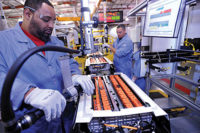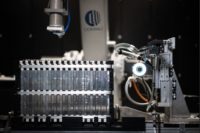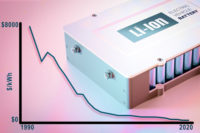CAMBRIDGE, England—The market for lithium-ion battery cells to be worth $380 billion by 2034, according to a recent report by IDTechEx. Despite the emergence of alternatives, such as sodium-ion, lithium-ion chemistries are expected to maintain their dominance, fuelled by ongoing advancements that enhance performance and drive down costs.
“Key avenues for improving lithium-ion performance stem from changes to the anode and cathode materials, as well as optimizations in cell design, electrolyte formulation, changes in current collector design and improvements to battery management systems,” says Alex Holland, Ph.D., research director at IDTechEx. “Energy density remains one of the most important performance characteristics as an enabler of longer range EVs, longer device runtimes and for enabling new applications such as [air taxis].
“With the current iteration of litium-ion designs reaching their energy density limits, there is considerable interest in anode materials like silicon and lithium-metal, which offer the potential for significant increases in lithium storage capacity and, therefore, energy density over batteries using graphite as the anode material,” explains Holland.
“Beyond energy density, battery manufacturers and automotive OEMs are also increasingly focused on improving fast charge capability,” Holland points out. “Here, silicon-based anodes can also hold an advantage over graphite, with numerous companies advertising and starting to demonstrate the possibility of reaching 10-minute fast charge capability.”
Solid-state batteries also continue to garner significant interest as one of the most promising next-generation battery technologies due to their ability for safer operation. Improvements to energy density are also possible with solid electrolyte technology, because it can help enable the use of high-energy lithium metal anodes.
“On the cathode front, efforts are focused on optimizing the balance between performance and cost,” says Holland. “For example, materials such as lithium manganese iron phosphate and lithium-manganese-rich layered oxides are being developed to bridge the gap between lower-cost lithium iron phosphate (LFP) and higher-energy, high-nickel nickel manganese cobalt (NMC) and nickel cobalt aluminum (NCA) cathode materials.
“Innovations to how cathode active materials are synthesized are also being explored to reduce cell costs and minimize the environmental impact of cathode and battery production,” adds Holland.




